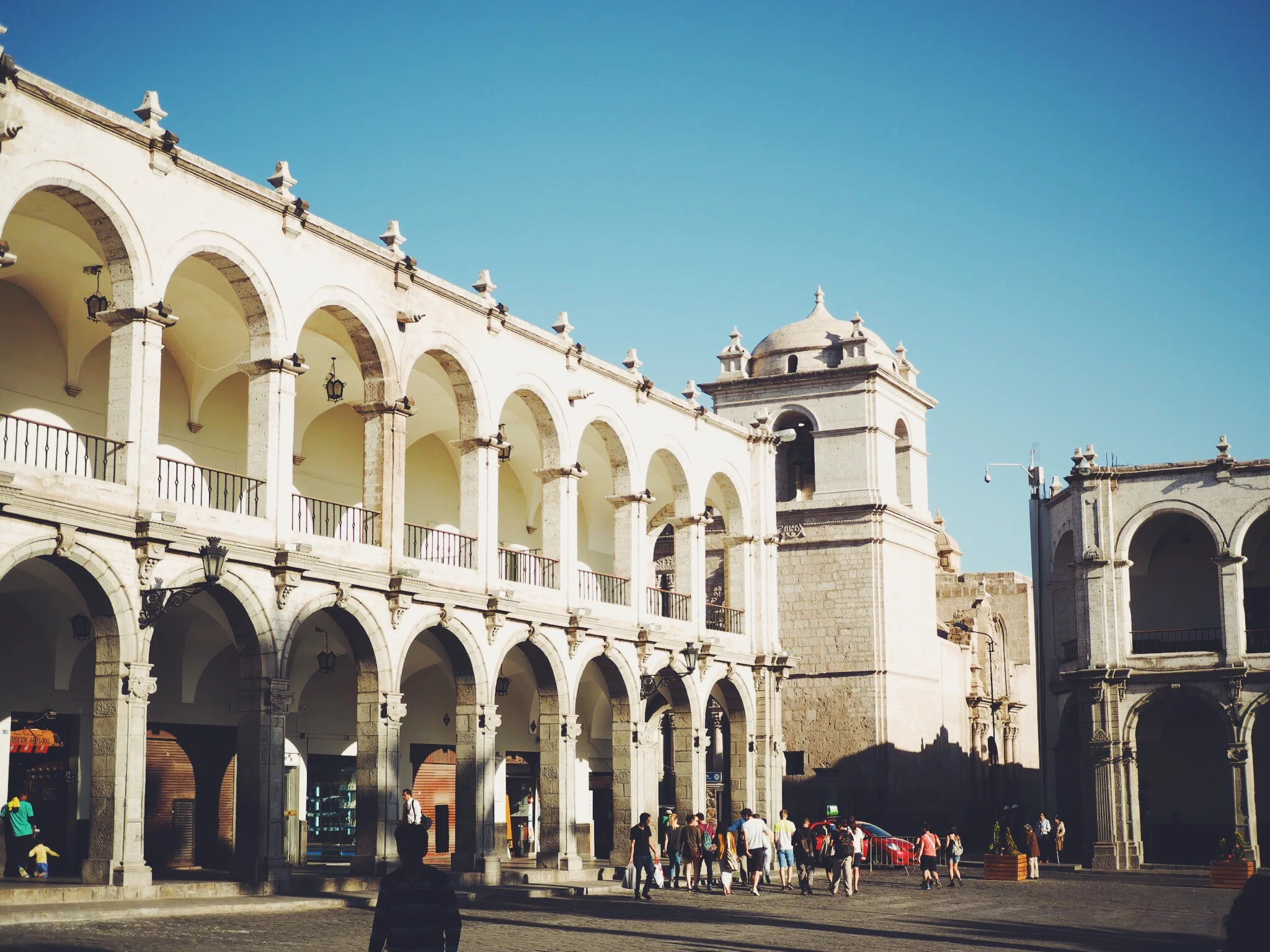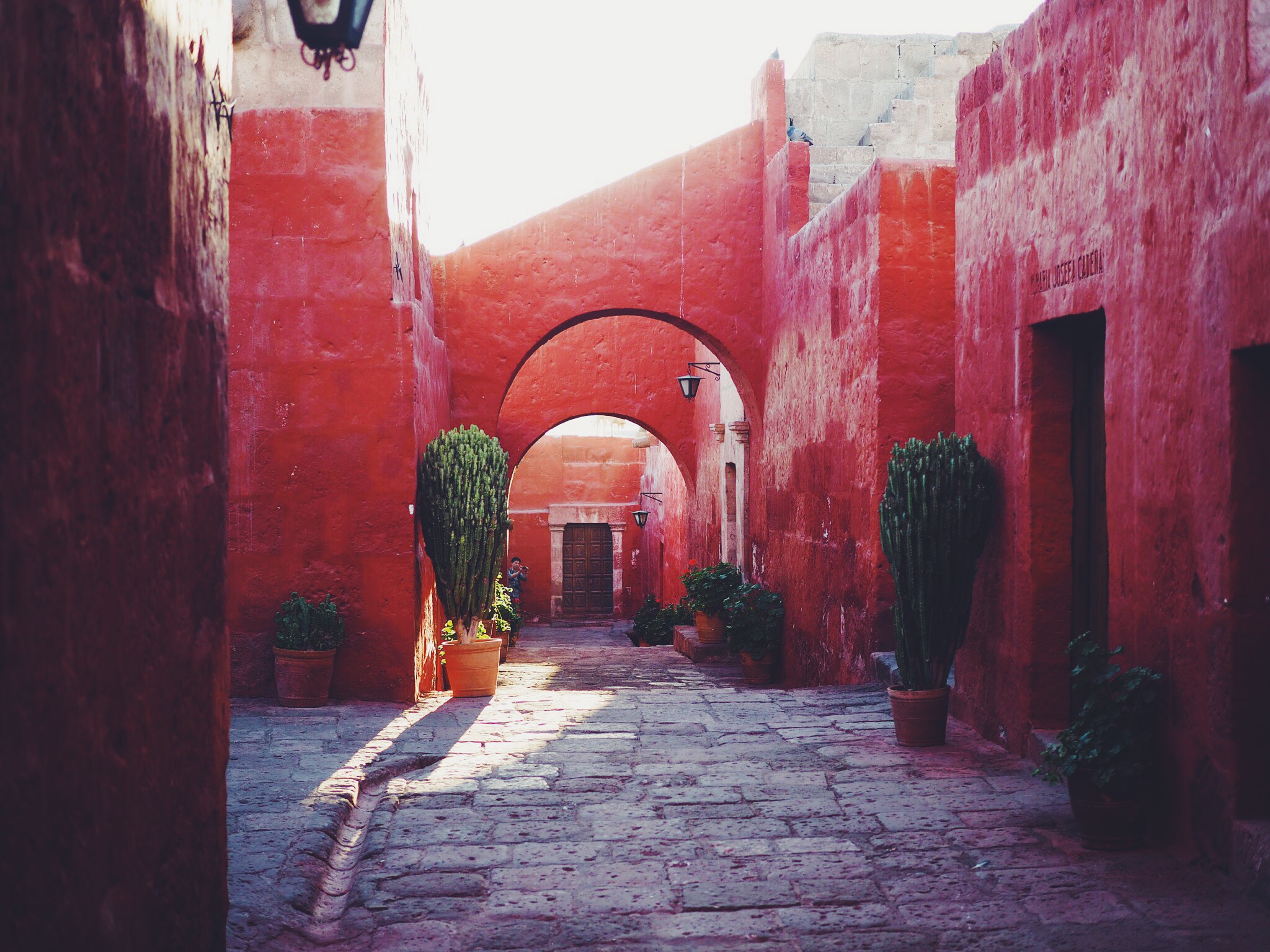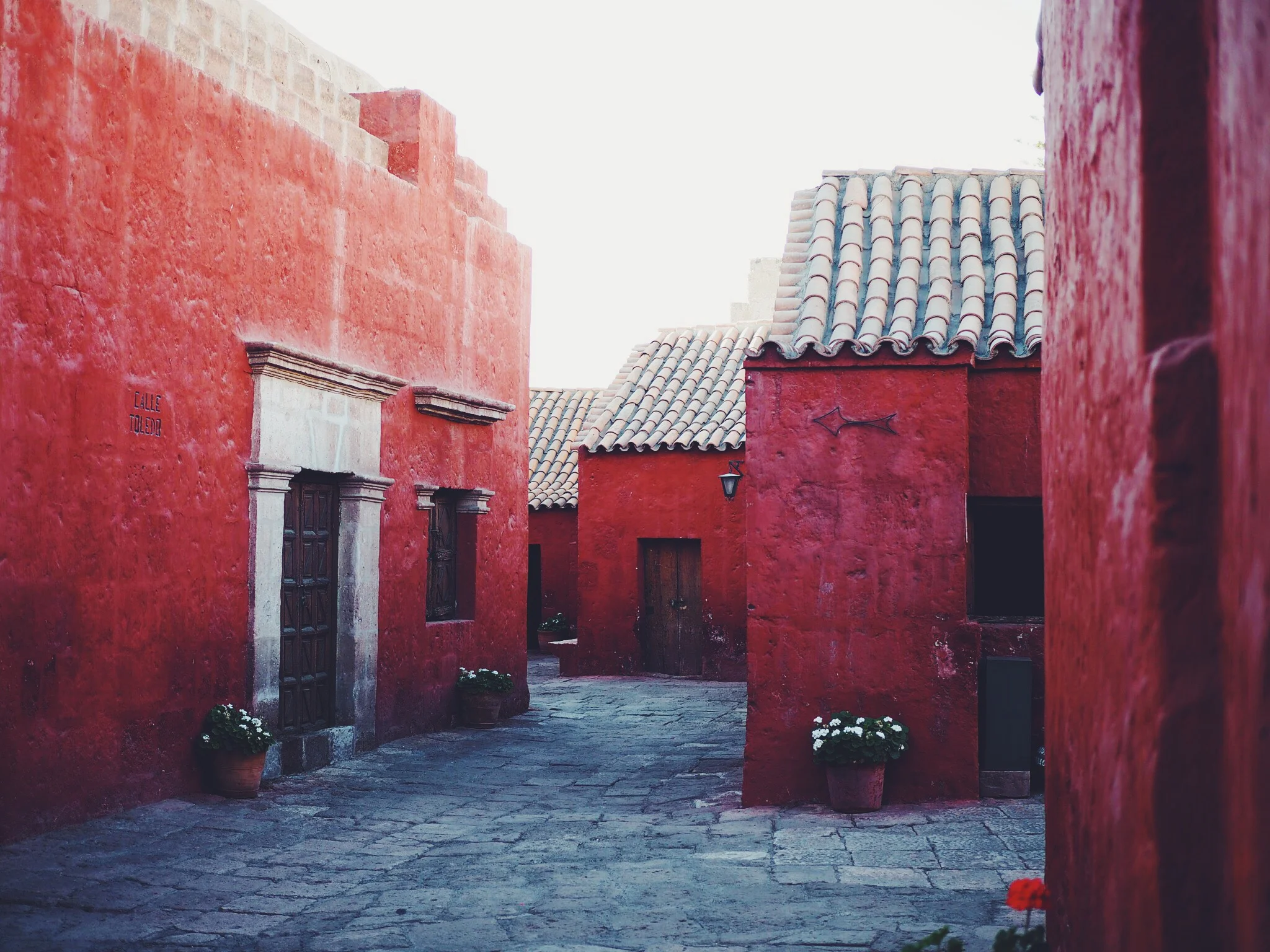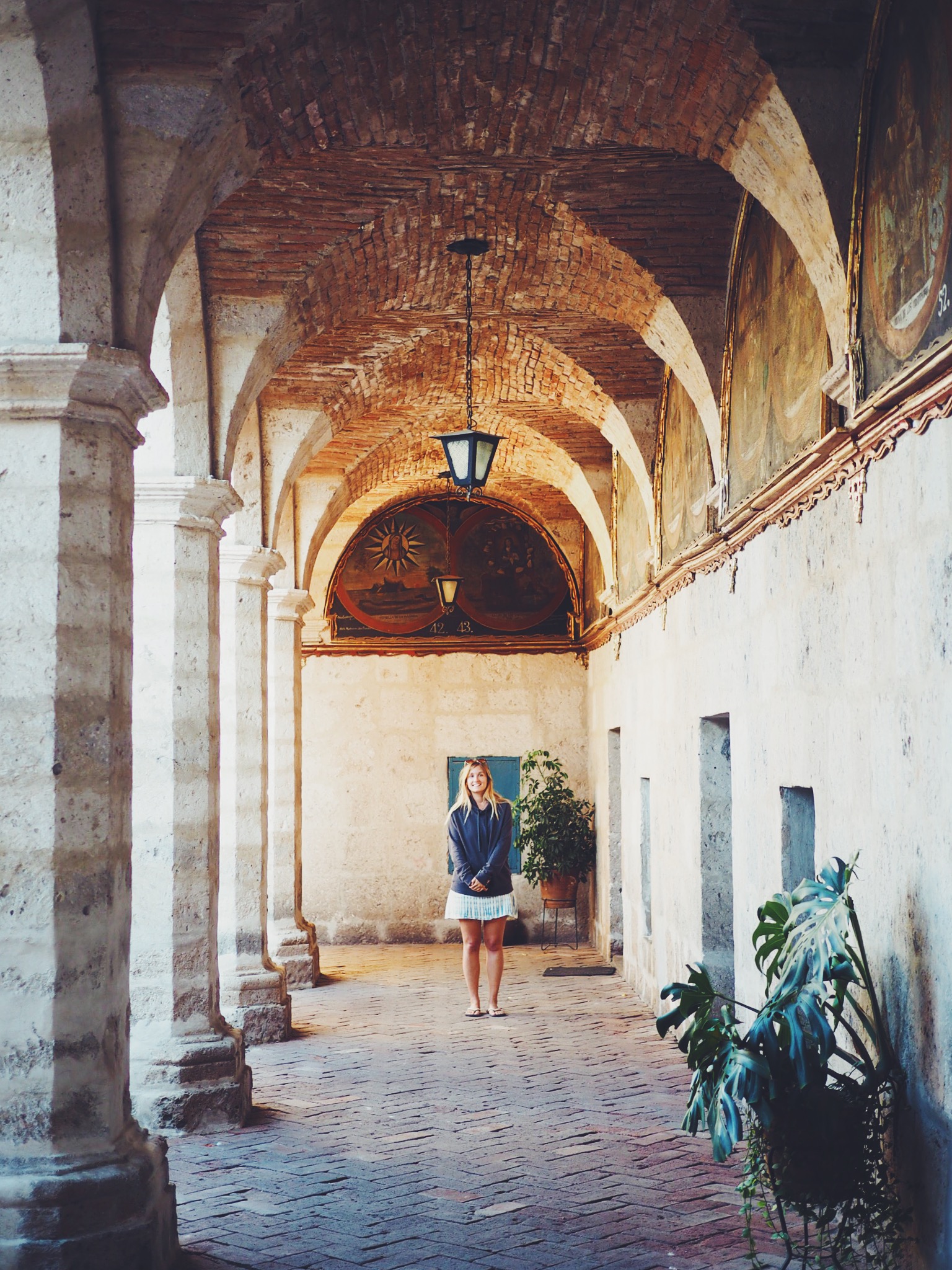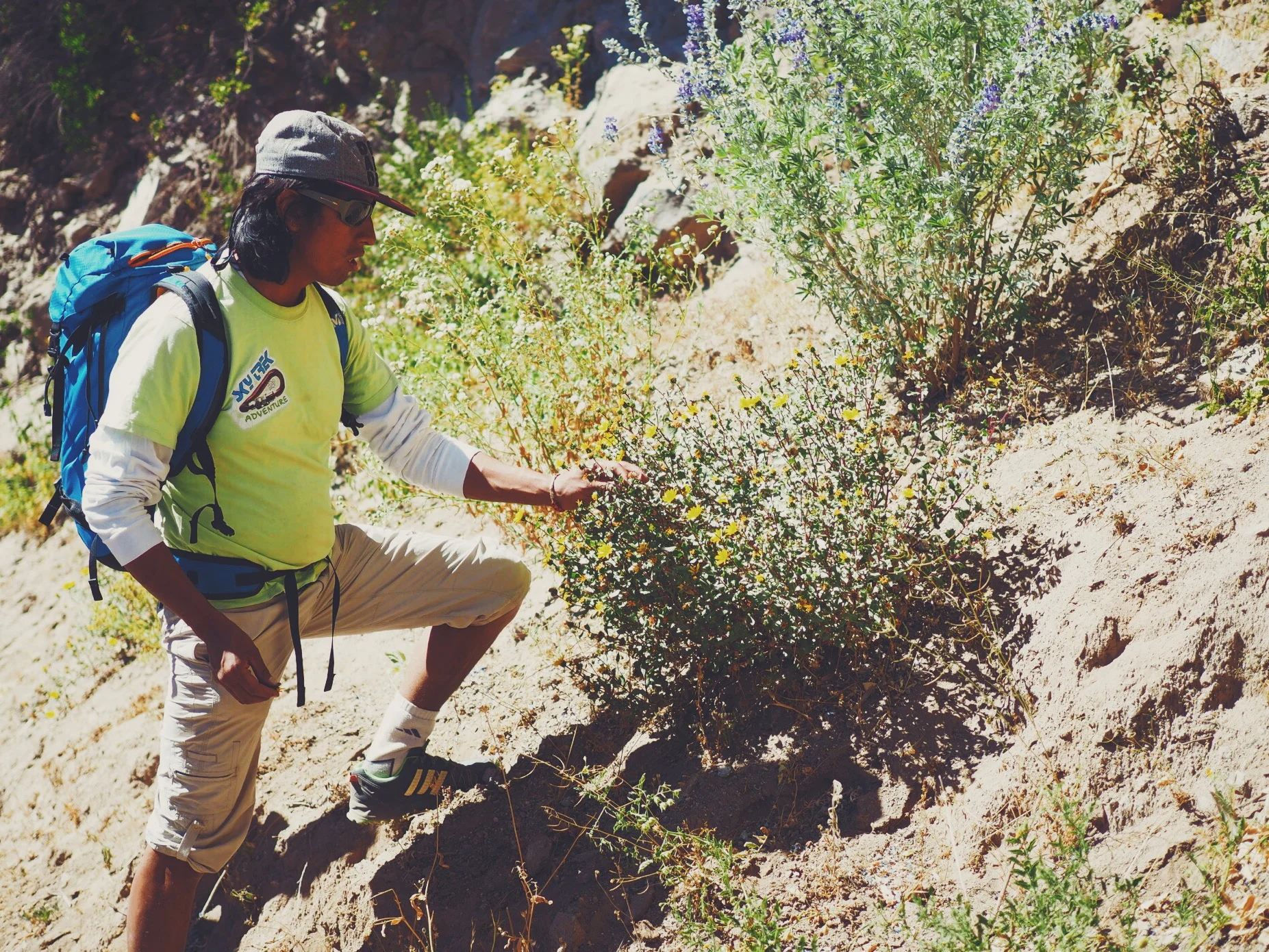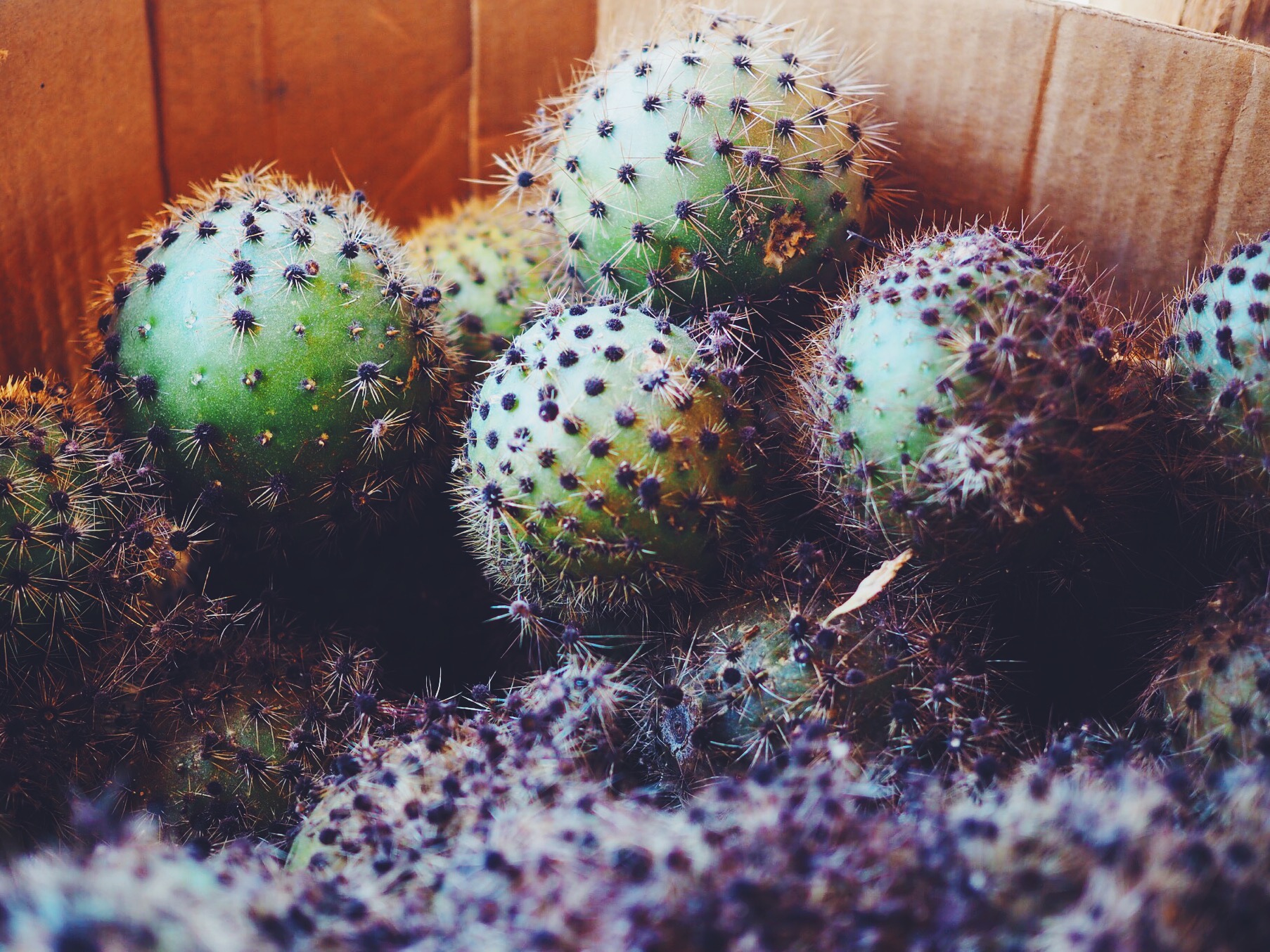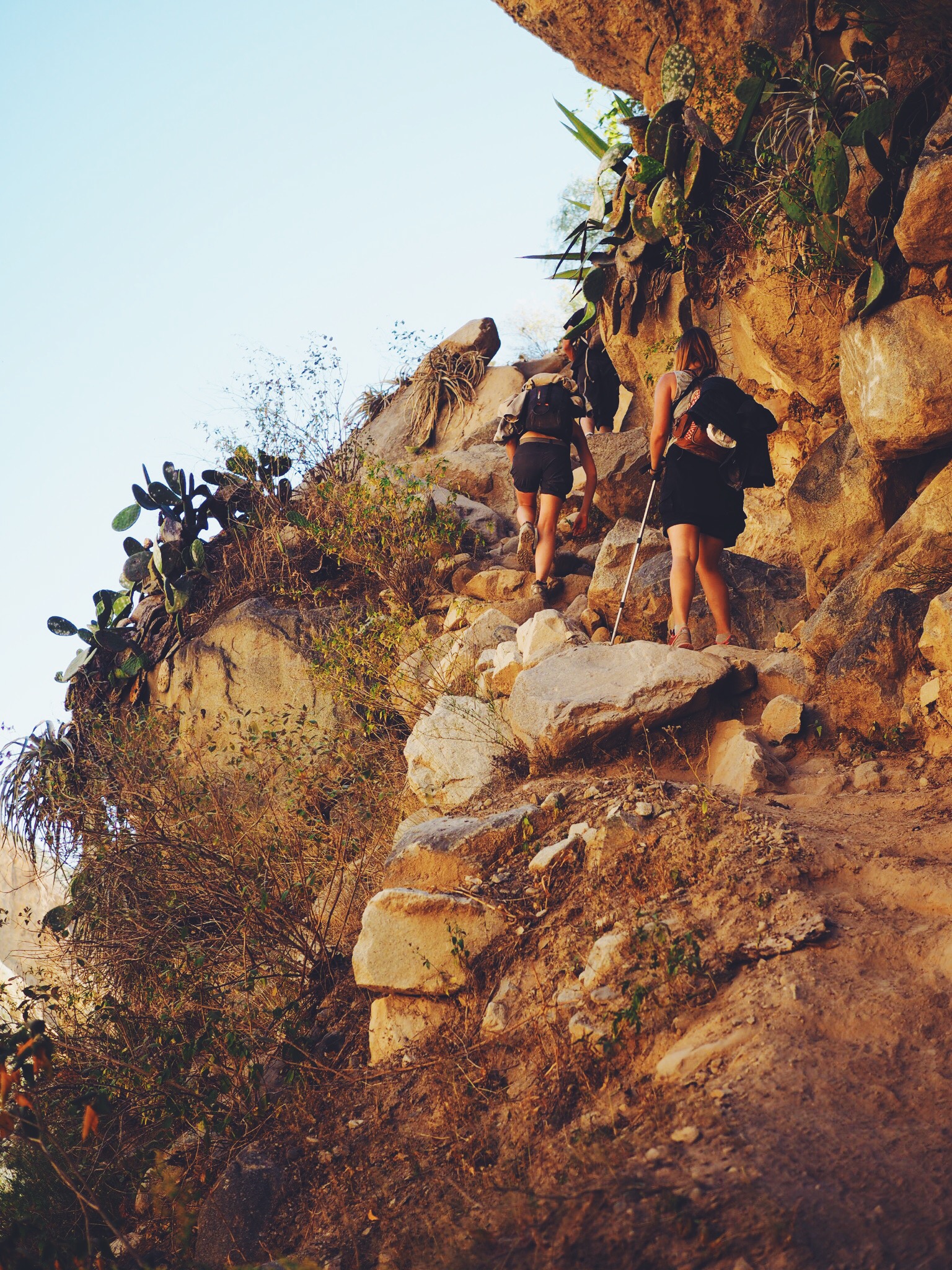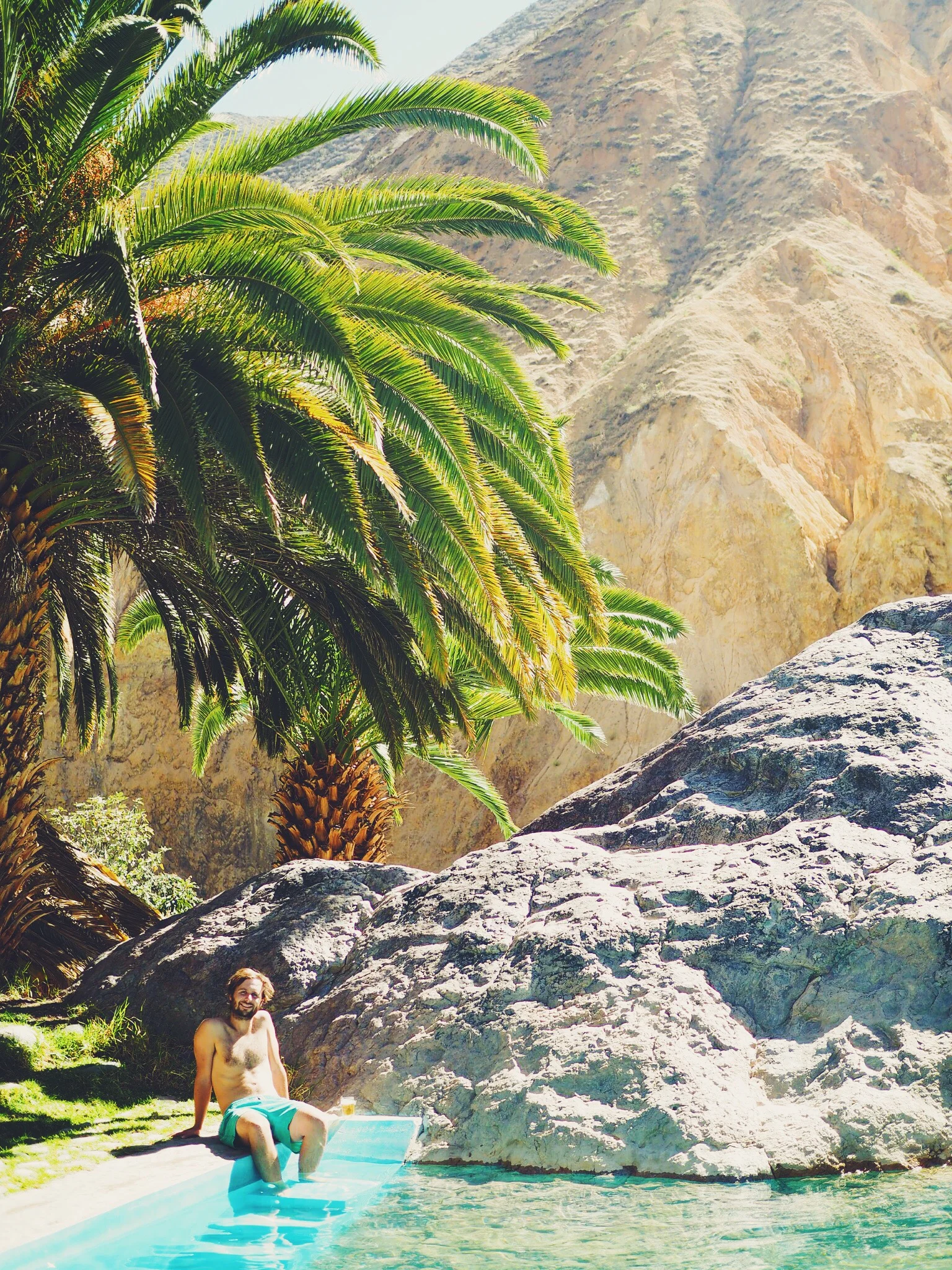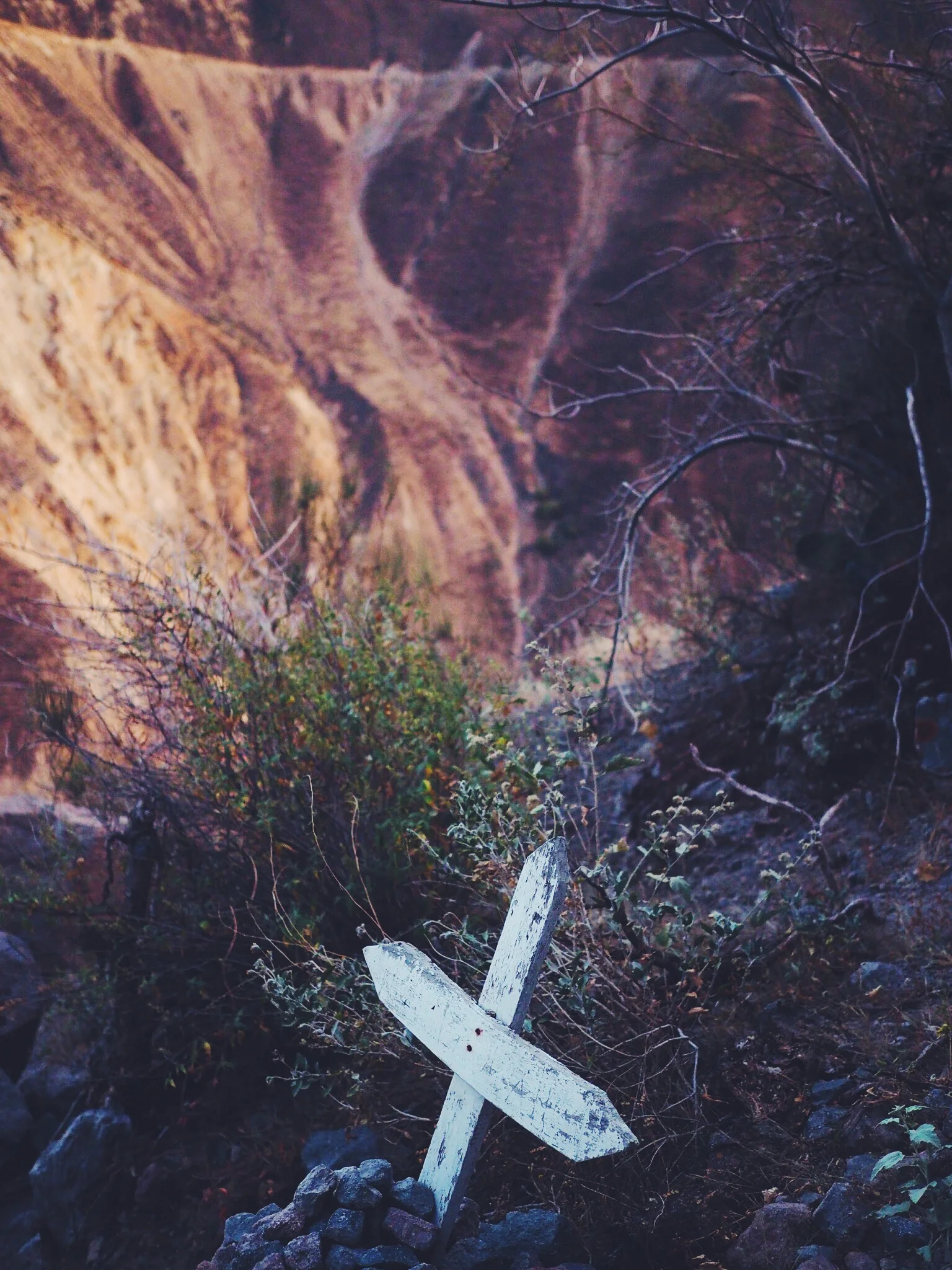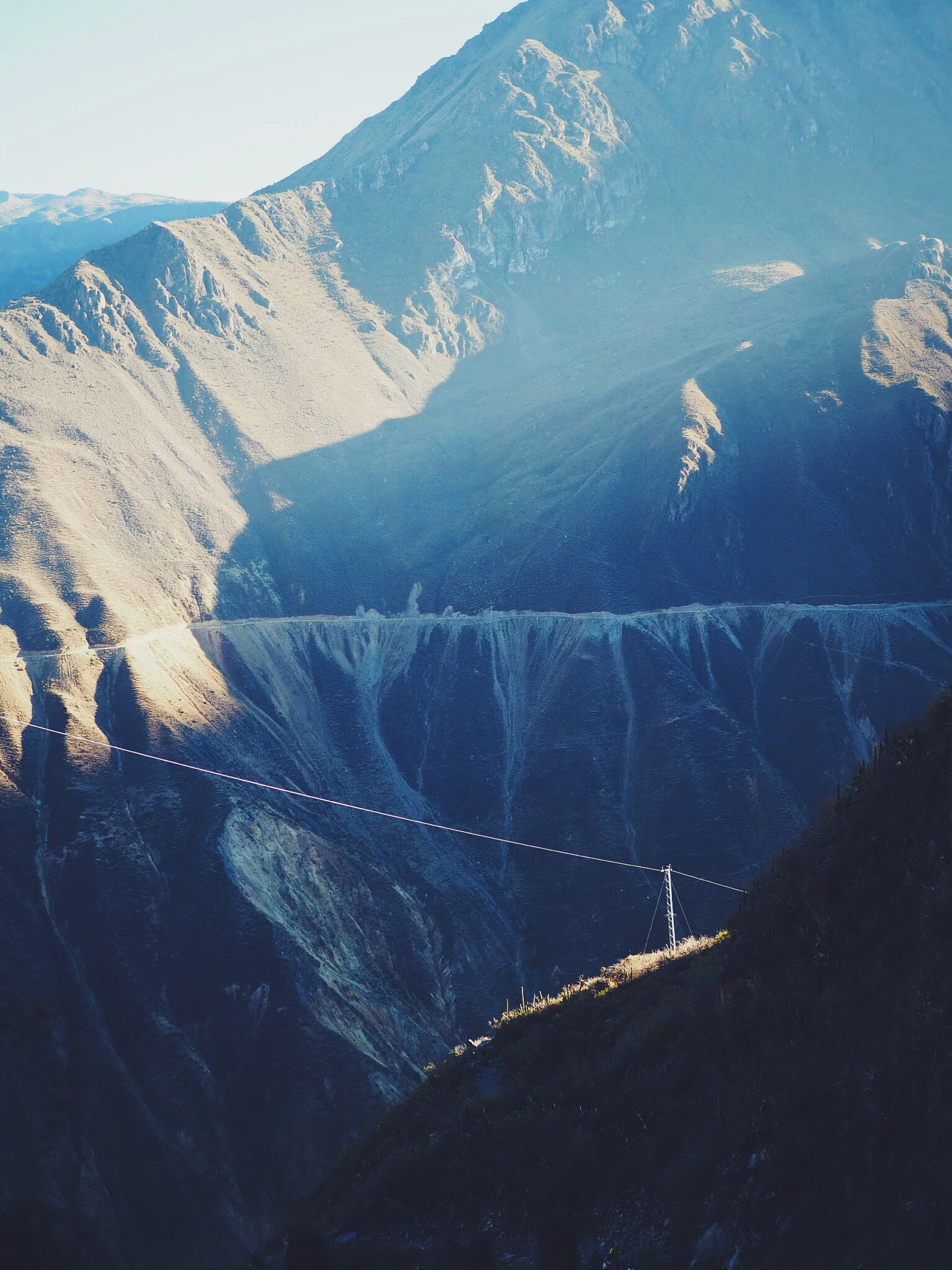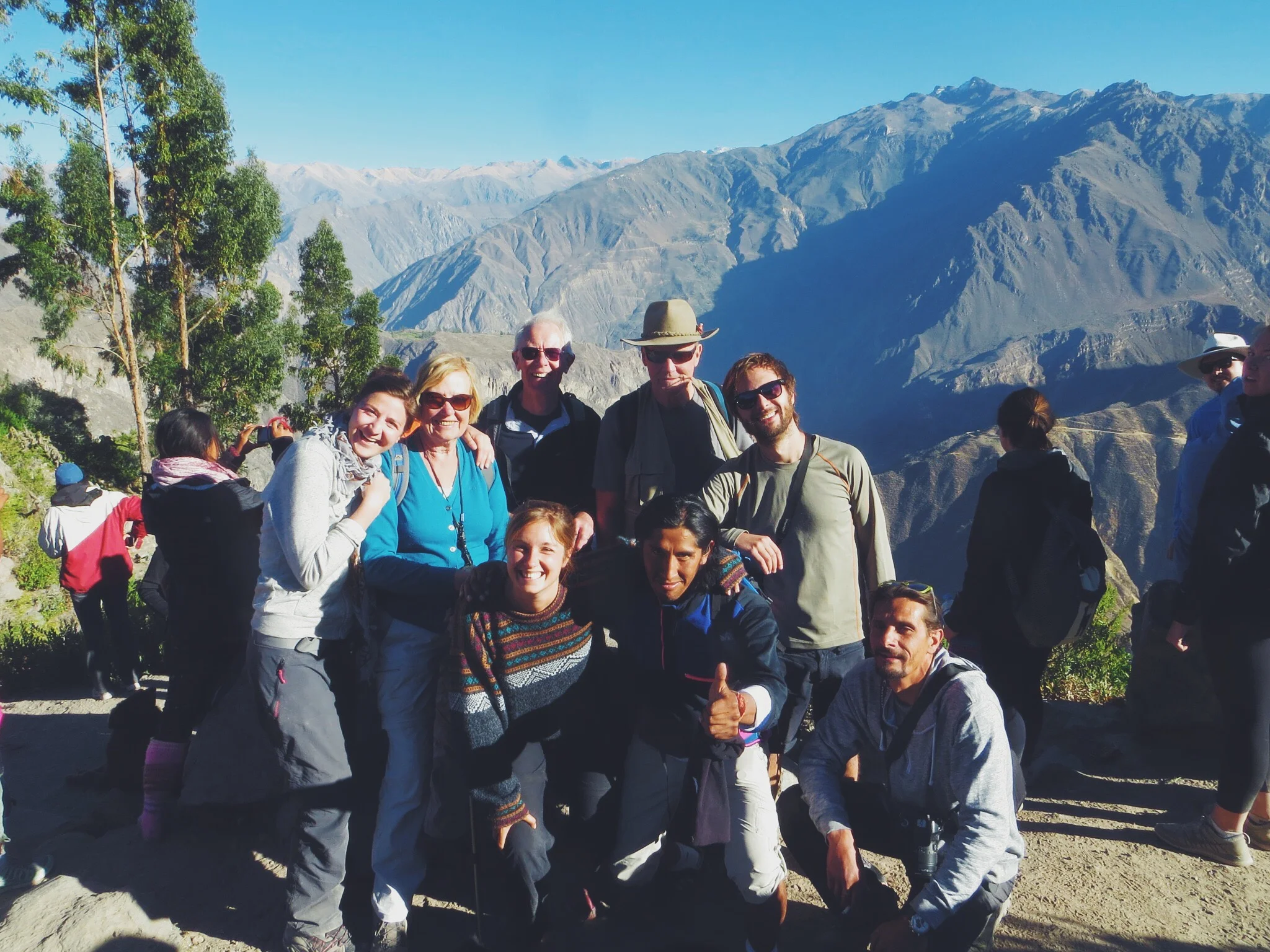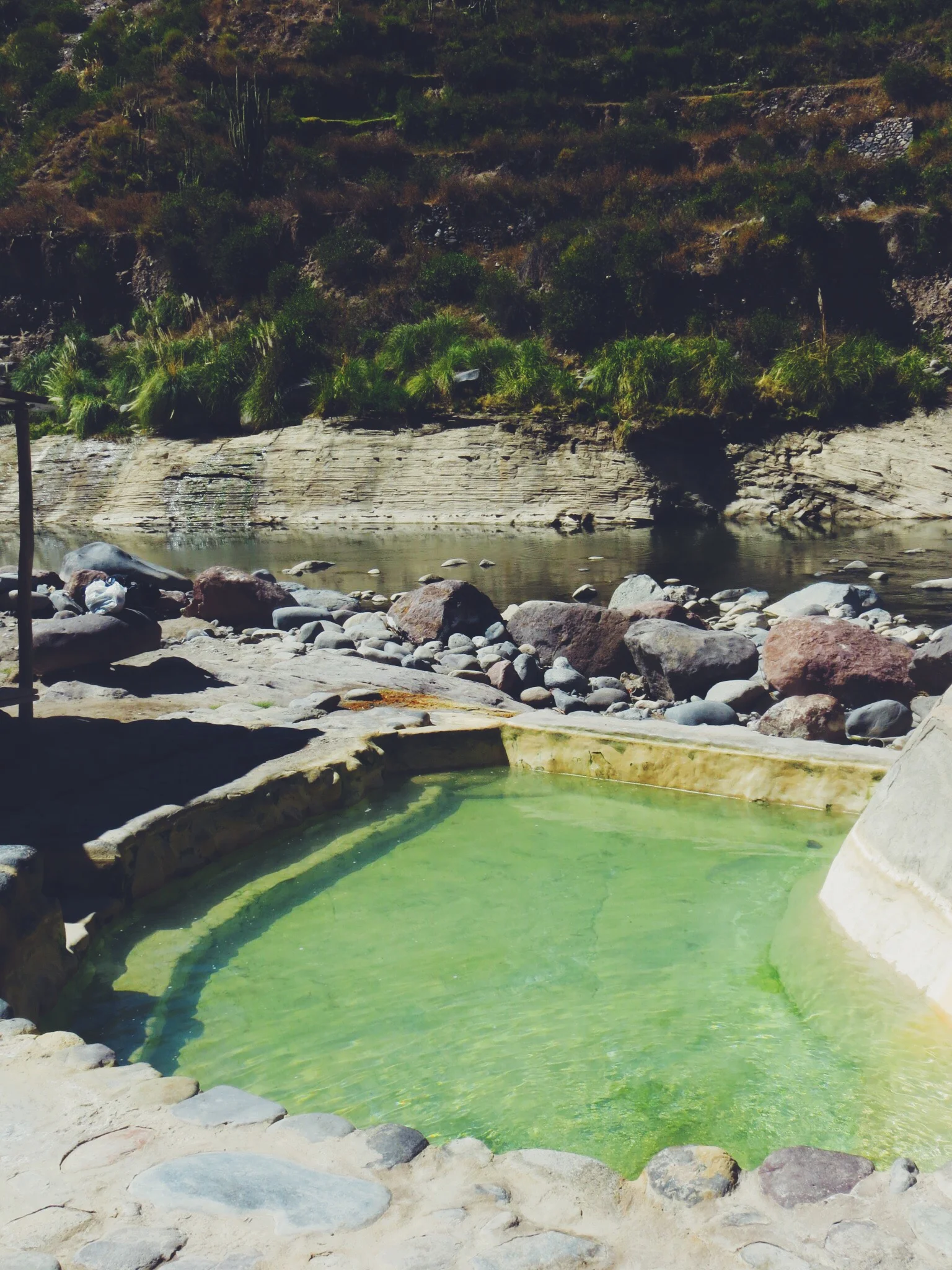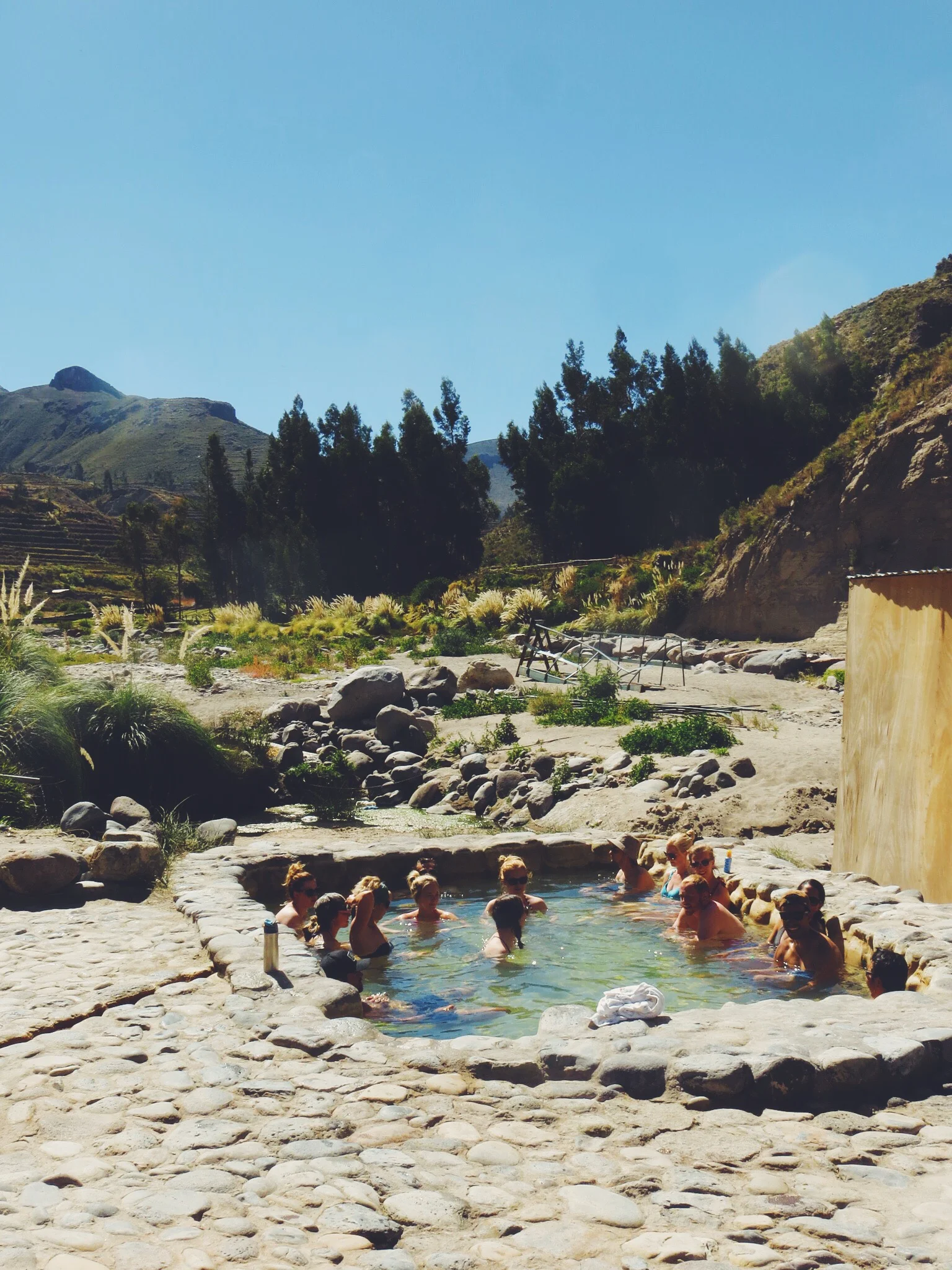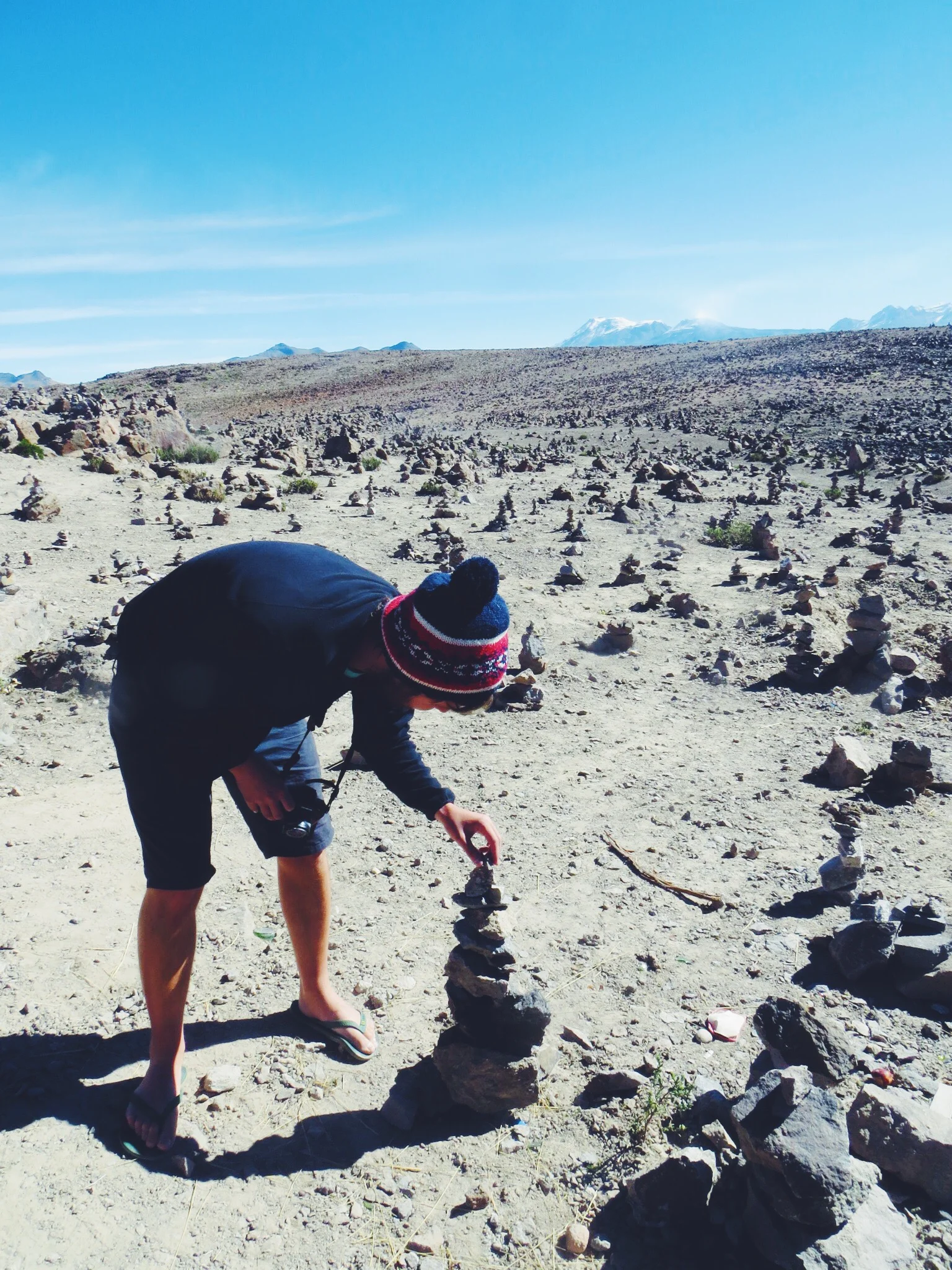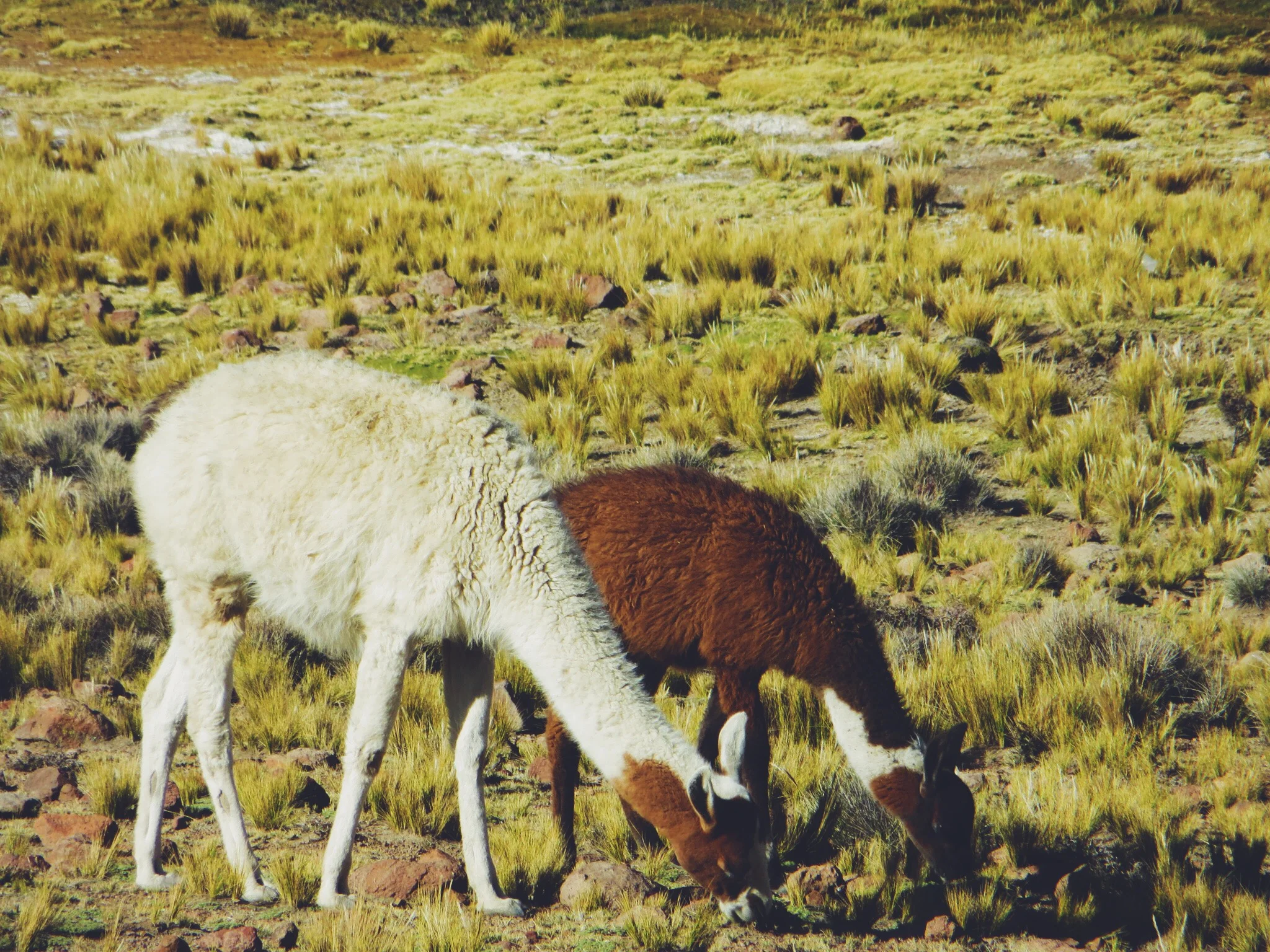Arequipa and Colca Canyon
After exploring both Machu Picchu and the Peruvian jungle, the next natural step for our travels took us to Arequipa, about 500km south of Cusco. One of the main reasons to visit Arequipa is to trek the Colca Canyon, the second deepest canyon in the world and a great place to spot giant Andean condors. Arequipa itself is known for it's beautiful white volcanic-stone architecture, so we were excited to spend a few days there before our trek.
Arequipa
Being the second largest city in Peru, we were surprised to find that the city centre of Arequipa was quite peaceful, with many small streets leading to beautiful old buildings and not too much traffic. We had arrived by night bus from Cusco which had taken around 10 hours, and after a busy week were feeling pretty tired, so we checked into a reasonably priced hostel (La Posada Del Kuraka) and crashed. The hostel had a great roof terrace giving a great view of the city and the perfectly cone-shaped volcano Misti in the distance.
On our first day we took a walk through the Plaza San Fransisco to the pretty main square Plaza de Armes, taking in the white stone architecture such as the Basilica Catedral church and the many arches surrounding the square. As the sun was shining, we decided to grab an ice cream and found a bench to people-watch in the square. We then spent an hour or two wandering around the beautiful cobbled streets, peering into textile shops and exploring the quiet alleyways of the historic centre.
After watching the sunset from our rooftop we noticed that the Basilica Cathedral was beautifully lit, so we headed to the square once more for a closer look. At night it was just as busy as it was in the day, and there was even a classical music concert drawing in a small crowd. For dinner we went to Hatunpa, where they served dishes with varieties of Andean potatoes as the main ingredient with a choice of toppings. It was cheap and the service was excellent, and we even got to sample some Peruvian craft ales.
On our last day we had a lazy morning, and after lunch decided to go to the Monasterio de Santa Catalina, an old yet still functioning 20,000 square-meter monastery for nuns in Arequipa. We had to pay a rather steep 40 soles each for entry, but as its quite a big place we were told it was worth the money. On entrance we were greeted with a beautiful courtyard with many painted arches, plants and intricate tiles. As we wandered through the maze of passageways it started to feel like we'd wondered back in time, and we really enjoyed exploring the Mudejar-style architecture, with walls painted red, blue and orange to define the various sections. It felt more like a small town than a monastery!
The monastery was comprised of many rooms including kitchens, bedrooms, prayer rooms and chapels, all surrounded by very well kept gardens and water fountains. It seemed surprisingly quaint and comfortable considering nuns lived there, and was quite unusual compared to typically minimal religions dwellings. After an hour or so the monastery was about to close, and so we headed back to the hostel just in time to watch the sun set from our hostel roof terrace, having really enjoyed Santa Catalinas rustic charm and tranquil ambiance.
We had been recommended Sonccollay on our travels, a restaurant in Arequipa that was known for it’s ‘pre-inca’ cuisine, an ancient style of cooking that used no oil or butter to prepare traditional andean ingredients. Curious by this, we decided to pay it a visit while we were there. The restaurant was situated on the main square overlooking the cathedral, and we arrived with high expectations and empty stomachs. On entering, we noticed that the restaurant actually wasn’t that busy, with only a few other people there. We sat outside (which was a little chilly), and ordered our food. The menu was surprisingly pricey, but we assumed it would be worth it once it came.
To our disappointment we ended up waiting for over an hour for the food, with one dish arriving 20 minutes before the other. On top of this portions were less than generous, and we were a bit annoyed to leave feeling hungry, despite it being the most expensive meal we'd had in Peru so far. On the plus side, the food was really tasty, and the charcoal-grilled duck was beautifully cooked, as was the river lobster ceviche cured in passionfruit. It was also nice to meet the chef and see his rustic kitchen and traditional cooking techniques. However, we probably wouldn’t recommend the place unless you come in a group (so you can try more of the dishes), don't mind a long wait and are prepared to splash out!
Colca Canyon
Colca Canyon is the most popular place to visit from Arequipa, and being the second deepest canyon in the world (more than twice the depth of the Grand Canyon in Arizona) and with stunning scenery it's not hard to see why. We had met a couple of travellers at our hostel the day before who had told us the 2 day trek was pretty intense and that it was much better to do the 3 day option, so taking their advice we booked the slightly longer trek from our hostel. The tour agency was called Oasis Palmeras Travel Tour, and having read good reviews online and with a time-efficient itinerary for a decent price, we felt confident we would enjoy our trek.
Day 1
We got picked up from our hostel at 4am to get the 3 hour minibus to the Colca Canyon with a few other trekkers. After driving for a couple of hours the sun rose and we began to see the incredible scenery that led to the canyon, with green hills, Inca-style terracing and the impressive mountains that made up the Salinas and Aguada Blanca National Reservation. We stopped for a quick and basic breakfast at a small cafe before continuing to our first stop, Cruz del Condor.
Cruz del Condor is a popular tourist spot on the way to the Colca Canyon where you can see giant Andean condors, a huge bird with a wing span of up to 3 meters and an important icon of South American culture. When we got there we found swarms of tourists already there, but luckily the condors didn't seem phased, and silently glided all around us in their numbers, often flying right overhead.
After getting a few photos we got back in the minibus and were driven to the starting point of the trek. We met our guide and introduced ourselves to our fellow trekkers, including a French couple and a group of elderly guys from Holland. Before we set off our guide explained the reason behind the name 'Colca', originating from a combination of the Inca settlements Collagua and Cabana (hence Col-Ca). He also explained that a Colca is a kind of Inca food store built into the mountains. We the set off in our small group down the steep canyon path, edging deeper each step we took, taking in the incredible scenery as we went.
About 2 hours later we approached the bottom where we arrived at a river crossing, and took a much needed break from the heat in the shelter of a shaded hut. After we got our breath back we crossed the bridge and headed up a short but very steep path. At the top we took another break amongst bunny ear cacti and from there it was only a 20 minute walk through farmland along flat terrain (much to our relief) to our lodging.
We finally arrived at our accommodation, a farmhouse settlement with a few rooms and a small restaurant. We had a lunch of soup and Lomo Saltado (fried steak and peppers with rice) and chatted to the other Trekkers. We then went for a short siesta, finding that our rooms were basic but cosy, and only lit by candle light. After a relaxing afternoon we grabbed a few beers and watched the incredibly clear starry sky before dinner and bed.
Day 2
On the second day we woke around 7am and had a great pancake breakfast before we started our trek. To our relief we were told that the days trek would be much less steep as we were now deep inside the canyon itself. Our guide led us along the stony path, pointing out some interesting landmarks such as the '5 warriors', a series of statue like rock formations and an ancient Inca waterway carved into the vertical cliffside. It was a lot hotter lower down the canyon, and as the heat of the day approached the trek became a little more tiring, despite being less challenging in terms of terrain.
We took a rest at a small family farm, and got a much needed cold drink and some snacks to keep our energy levels up. The lady who worked there offered us some cactus fruit, which was really tasty if you could avoid the spines! Shortly after an excited little Peruvian boy, who was spending his holidays on the farm, showed us the various animals that lived there including ducks, chickens and a lot of Guinea pigs (or cuy) stored in a series of hutches - all of them clearly would end up on the menu!
After exploring the farm and saying our farewells to the family, we set off once again through the canyon, passing through small towns along the way. The scenery was spectacular and the sheer size of the canyon walls never seemed to grow old. We continued along the canyon path where we gradually started ascending and descending up and down the dusty path.
As we approached 3 hours of walking we started to see the green Oasis de Sangalle nestled in the bottom of the canyon. We could see waterfalls leading to a river that flowed right through the middle, with tropical plants and palm trees surrounding them. With this very inviting view in sight we descended quite quickly, keen to take off our shoes and relax after a day of walking in the heat.
Finally we arrived at the Oasis de Sangalle, and wandered past a few other hostels and hotels before finding ours, the Paraiso las Palmeras Lodge. It was absolute paradise, with our own small private hut and a large swimming pool surrounded by palm trees in the most idillic setting. Taking advantage of the sun we quickly changed into our swimming gear, grabbed a beer and dived into the refreshing pool to cool off.
The sun set fairly quickly in the canyon (around 4pm) due to the surrounding mountains, and so once the pool became shaded we got changed and headed to the bar for a few drinks with the other trekkers. This led straight into a typical Peruvian dinner (soup, rice and meat) which filled the gap. Feeling tired after this we headed to bed early before our final day and the big ascent.
Day 3
After an early night and chilled afternoon the 4am start wasn't too painful, but the temperature had dropped substantially over night so it still wasn't that pleasant. We followed our guide upwards, using our torches to navigate the stony pathway in the dark. After an hour the sun started to rise making it a bit warmer making for ideal trekking conditions. The higher we'de climb, and the further we walked from Sangalle Oasis we really began to appreciate how isolated it was.
Spreading the trek over three days meant we were well rested and with the help of some snickers we powered up in a time of 2:15 mins, even with multiple stops for photos on the way which we felt was quite an achievement for us! More impressively though, was that one of the guys in our group (aged 70!) also made it to the top which was really inspiring to see.
At the top of the canyon there were many people congratulating each other on making it up and taking victory photos. We took a much needed breather and got a few group shots ourselves before heading along the remaining flat path to a small town. We then walked to a little breakfast spot with a few other groups, and had eggs, bread and coca tea to refuel after our intense morning trek.
Once we'd finished breakfast we continued in the minivan on the road back to Arequipa, and stopped off at at the Apachetas of Chivay, a series of cairns thought to be made by the Incas, with an amazing mountain backdrop. The sheer number of them scaling the valley with a clear blue sky was an awesome sight. Additionally, and much to our surprise, we were shown the snowy peak of the Mismi mountain and were told that it is thought that it's glacial stream is the most distant source of the mighty Amazon River!
One thing we were really looking forward to on our trek was the Tambo hot springs. We made our way there, keen to soak our tired legs in the hot water. After walking down a short path and crossing a river we arrived at a series of pools. There were a few people in already, who warned that some of them were scorching! We decided to grab some cold victory beers while we dipped our toes into different pools to find the best temperature, and slowly lowered ourselves into one that felt as hot as we could manage.
After a few minutes we got used to the temperature, and relaxed for half an hour or so in the steaming natural spring water with our fellow trekkers. Our feet and legs felt almost fully rejuvenated as we made our way back to the bus and continued on our journey back to Arequipa, and was more than worth the 10 Soles entrance fee. While we were there we met with Amanda and Daniel, an Australian couple we had met during the trek, and enjoyed some beers together in one of the milder pools.
Continuing onwards we were taken to the small town of Chivay for lunch. The whole group piled into the Los Portales de Chivay restaurant where a large buffet table was on display with various typical Peruvian foods. Luckily it was an all-you-can-eat menu, meaning we could go to town! While we ate a local band started playing in front of our table, singing traditional music with pan pipes and guitars.
Once finished we were then back in the mini bus and headed up towards our next look out of the nearby volcanoes. The air temperature was really cold as we had reached an altitude of 3,650 meters, and so we only spent a few minutes there to get some pictures, but it was great to see the smoking Volcan Hualca in the distance and the hundreds of small rock piles that had been carefully balanced. We then headed a little further to a Llama park where wild Llama and Guanaco were roaming in the green and yellow fields.
Our 4 days in Arequipa and Colca Canyon affirmed our decision to stop there during our trip. We loved the architecture, food and vibe of the city, and the Colca Canyon tour was probably one of our favourite treks of the trip since Patagonia. Having a well organised tour really did make a difference, and the incredible scenery and landscapes made the steep and often tiring stretches more than worth it. We were also lucky enough to have a friendly and like-minded group who helped make the three days even more enjoyable. The canyon oasis and hot springs were a luxurious surprise for us, and extremely welcome for our legs after the inclines. We left Arequipa feeling energised, keen for more exciting adventures ahead.



